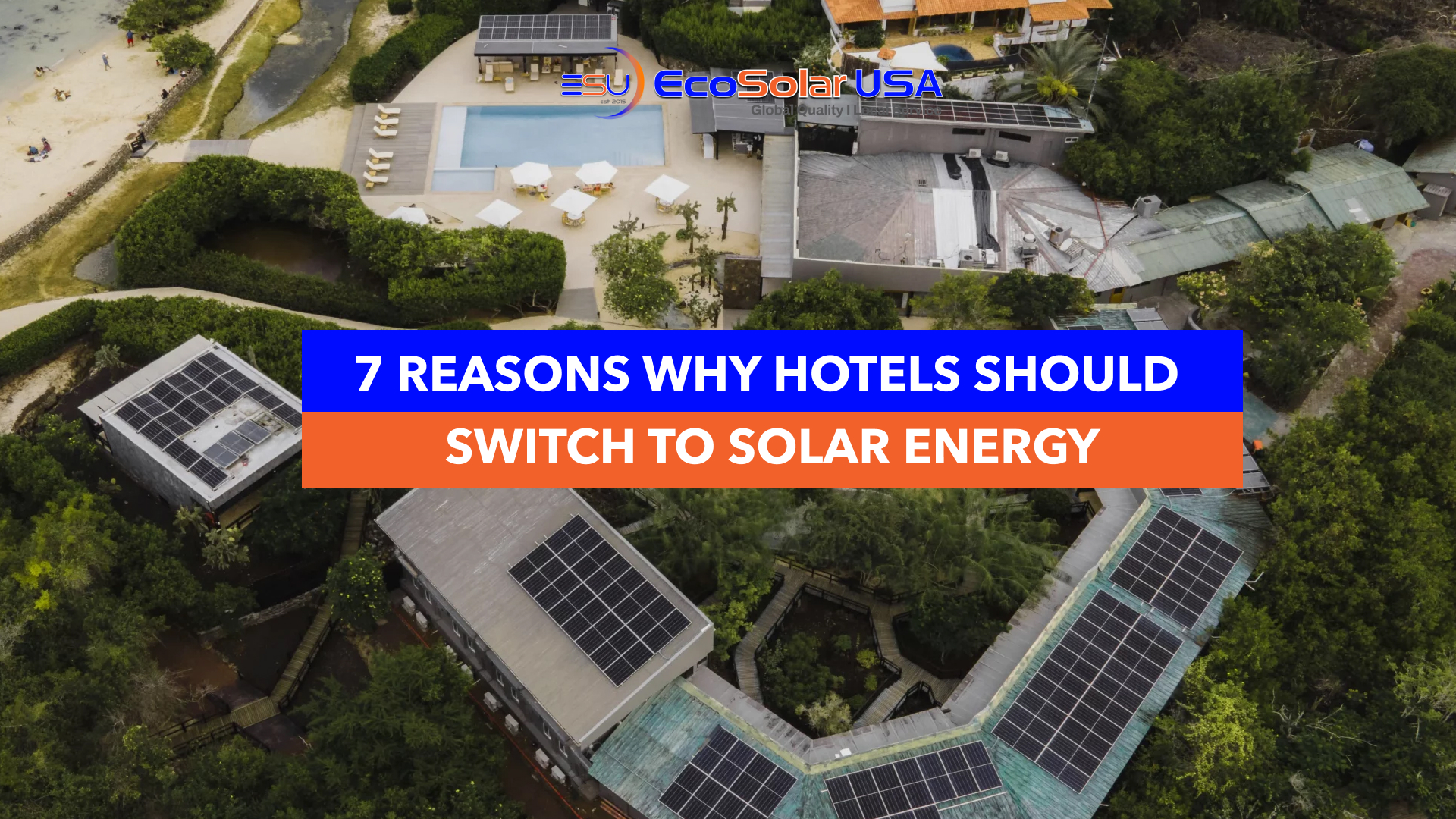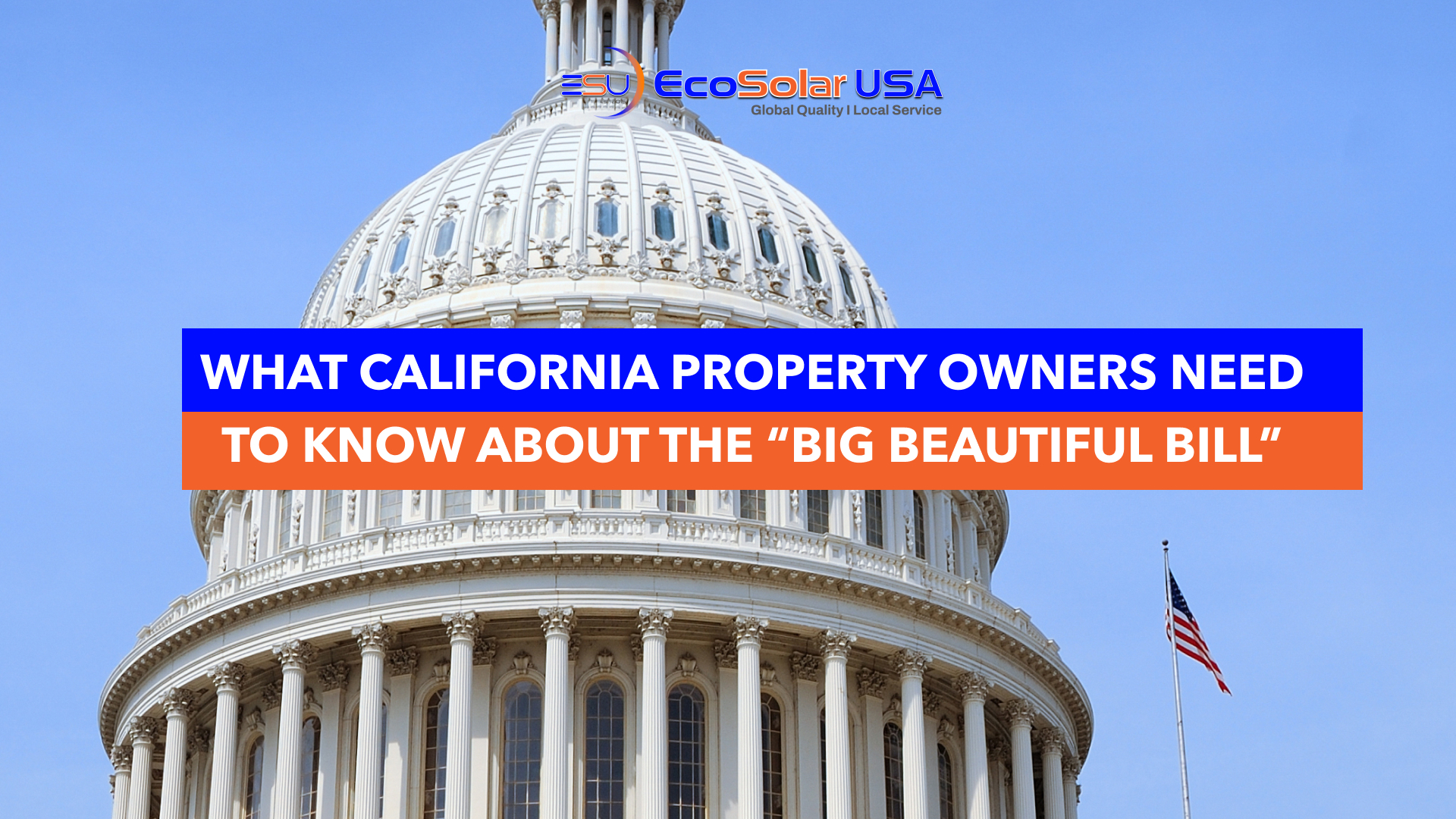
If you’re thinking about going solar, there’s no better time than right now. A major shift is coming to the solar industry, and it could cost you thousands if you wait.
Let’s break down what’s happening, how much you could lose by waiting, and what solar incentives are still available in 2025.
What is the Federal Solar Tax Credit?
The federal solar tax credit (also known as the Residential Clean Energy Credit for homeowners and the Investment Tax Credit (ITC) for businesses) is one of the most powerful incentives available to U.S. property owners. It lets you deduct 30% of your total solar installation costs as a dollar-for-dollar reduction on your federal income taxes.
How it Works:
- Direct Tax Reduction: You deduct 30% of the total cost of your solar system directly from your federal income taxes. This isn’t just a deduction from your taxable income; it’s real money back.
- Applies to All: It applies to both residential and commercial solar installations.
- Ownership is Key: You can claim it whether you buy your system outright or finance it, as long as you own it.
- No Cap: There’s currently no cap on system size or the amount you can claim.
- Includes Battery Storage: The credit covers the cost of both solar panels and battery storage systems.
Example: If your solar system costs $30,000, you could receive $9,000 back when you file your taxes.
Thanks to its extension by the Inflation Reduction Act (IRA), the incentive currently stands at 30% of the total cost. Without this credit, paying the entire installation cost out of pocket (or financed) could deter many from transitioning to renewable energy.
What’s Changing with the Solar Tax Credit?
Here’s the critical information you need to know: a new bill in Congress proposes ending the residential solar tax credit nearly a decade early.
The 30% Federal Solar Tax Credit (Section 25D) has helped millions of homeowners make the switch to clean energy. However, recent legislative proposals could terminate this credit for residential systems by December 31, 2025, instead of the currently scheduled phase-out in 2035 under the Inflation Reduction Act.
What this proposed change means:
- Early Elimination: If the proposed legislation becomes law, the current 30% credit for residential systems would be eliminated after December 31, 2025.
- Strict Deadline: To qualify, your solar system must be fully installed and operational by the end of 2025. There will be no extensions or grace periods.
This new budget bill, passed by the U.S. House in May 2025, proposes eliminating the 30% residential credit as part of a broader effort to fund extensions of the 2017 Tax Cuts and Jobs Act. It also accelerates the phase-out of commercial clean energy credits and restricts leasing arrangements, broadly impacting the solar industry.
The proposal has sparked significant concern:
- Industry Impact: Organizations like the Solar Energy Industries Association (SEIA) warn that ending the credit could jeopardize hundreds of U.S. factories and thousands of jobs.
- Economic Consequences: Over 80% of IRA-backed clean energy projects are in Republican districts, risking their local economies.
- Energy Grid Stability: Solar and battery storage are expected to account for 93% of new U.S. electric capacity in 2025. Terminating the credit could slow clean energy deployment and risk blackouts.
The bill still needs Senate approval, and bipartisan support for clean energy in some Republican-led states may lead to revisions. However, the current proposal offers no gradual phase-out, creating urgent action for homeowners.
Why This Hits California Harder Than Any Other State
California is seeing electricity rates rise faster than ever, with some utility customers paying over 45 cents per kilowatt-hour during peak times.
If you live in California, the threat of losing this tax credit is even more urgent:
- High Electricity Consumption: Our homes use more electricity, especially with HVAC systems, EVs, and pool equipment.
- Highest Rates: California’s electricity rates are among the highest in the nation, making the return on investment (ROI) for solar one of the best.
- Fragile Grid: Blackouts and time-of-use surcharges are becoming the norm.
- NEM 3.0 Impact: The new NEM 3.0 policy has already cut the value of exported solar power. Removing the federal tax credit piles on even more financial pressure.
Essentially, you’re about to lose one of the last significant solar incentives. If you wait until fall or winter, it may already be too late to get your system installed in time.
How Much You’ll Miss Out On If You Wait Until 2026
The financial impact of missing the 30% federal solar tax credit is substantial. Let’s break it down:
| Solar System Cost | ITC (2025) | ITC (2026) | Difference (Lost Savings) |
|---|---|---|---|
| $25,000 | $7,500 | $0 | -$7,500 |
| $35,000 | $10,500 | $0 | -$10,500 |
| $50,000 | $15,000 | $0 | -$15,000 |
That’s thousands of dollars in lost incentives. Waiting until 2026 means your return on investment (ROI) shrinks, and your payback period increases significantly.
What Could This Cost You? If you wait and the bill passes:
- You could lose up to $9,000 in tax incentives for a typical 10 kW system.
- The cost of panels and batteries could rise due to demand spikes before the deadline.
- Reputable installers may be booked out months in advance, making it impossible to install before 2025 ends.
- You might have to wait years before any replacement incentive program is created—if at all.
Why Homeowners & Businesses Shouldn’t Wait
The urgency is clear. Acting now helps you capitalize on significant financial benefits before they potentially vanish.
- Costs Will Go Up: Without the 30% tax credit, the upfront cost of solar will increase after 2025. Fast action ensures you take full advantage of current financial incentives.
- Installation Takes Time: Your solar system must be fully operational by December 31, 2025, to qualify for the tax credit. Permitting, design, and installation often take several months. Now is the time to begin the process and avoid last-minute delays.
- Avoid an Installer Rush: As the deadline approaches, solar installation companies will become increasingly busy. The earlier you sign up with an installer, the better your chances of securing installation slots that ensure your system is completed on time.
Beyond the tax credit, here’s what else you gain by acting now:
- Substantial Savings: A 30% tax credit on the full cost of your solar installation directly reduces your federal income tax, translating into significant savings.
- Faster Payback Periods: With solar tax credits, most homeowners see returns within 6 to 10 years. Without them, this stretches much longer.
- Higher Lifetime ROI: Over a system’s 25 to 30-year life, these credits help maximize overall savings, especially when combined with state incentives or net metering.
- Long-Term Energy Independence: You lock in your power costs and gain more control over your energy usage, shielding your household from future utility rate hikes.
What Steps Should You Take Now?
If you’re on the fence about going solar, here’s your action plan to secure your savings:
- Schedule a Consultation: Research trusted solar installers and schedule a consultation. Verify their experience, certifications, and expertise.
- Get a Quote: Request a detailed quote to understand your costs after factoring in the 30% tax credit.
- Start Planning: Work with your solar provider to finalize your design and apply for necessary permits.
- Act Quickly: Commit to installation as soon as possible to secure a spot before any rise in demand.

Limited-Time California Offer from Eco Solar USA
Sign up by August 31, 2025, and get your first 6 months of solar FREE with a Power Purchase Agreement (PPA) or Lease.
- ✅ No upfront costs
- ✅ Instant savings
- ✅ Easy switch to clean energy
📩 Only available in California. Message us today to claim your spot before this exclusive offer ends!
Don’t let this opportunity pass you by. Are you ready to see how much you can save on solar before 2026?



